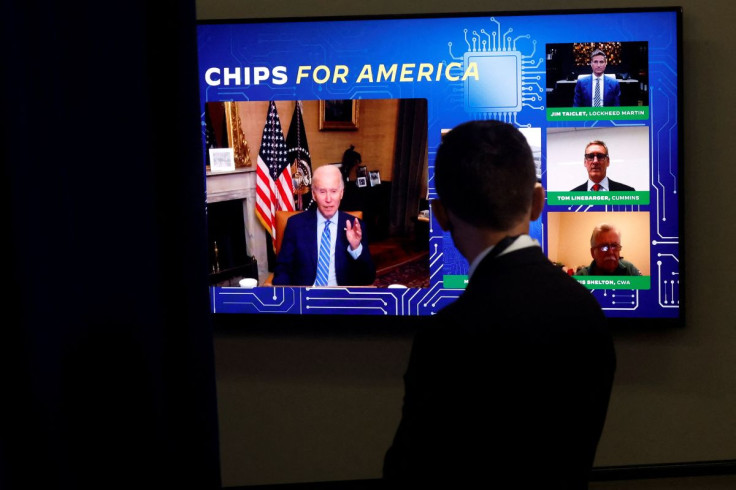With CHIPS Act, US Plans To Lord Over China

The Biden Administration has meticulously mixed chips that are used in cars, laptops, medical devices and even sex toys, with national security. So, the CHIPS and Science Act, which was passed on July 27, is all about maintaining technology leadership over China, which pampers the idea of the market leader in the near future.
The Biden administration has come to terms with the reality that when it comes to chips with transistors that are less than 10 nanometers wide, the US is nowhere in the picture. Currently, almost all of these chips are churned out in Taiwan, and none are made on U.S. soil.
It is not easy to produce chips with transistors because they use certain types of technology, which are vital for weapons that the U.S. military depends on. What will happen if China invades Taiwan and threaten America's supply of advanced chips?
So, it seems the Biden administration was right in linking the CHIPS Act with national security to a greater extent.
Besides, the modern semiconductor manufacturing capacity as a whole in the U.S. eroded from 37 percent in 1990 to 12 percent currently because other nations, including China, South Korea, and the member states of the European Union, have thrust on it with incentives and the U.S. did not. As a result, the cost of operating a semiconductor facility in the US is 25-50 percent higher than outside the U.S.
The Act has set aside $280 billion for science and technology, roughly $52 billion of which will be earmarked for boosting U.S. semiconductor production. A separate $11 billion is earmarked to advance research and training.
The Act has been welcomed by companies such as Intel, which is planning a mega factory in Ohio to focus on advanced chips. The $20 billion facility planned by Intel, once the world leader in chip manufacturing, is expected to hire 3,000 workers along with 7,000 temporary construction jobs.
The Act is set to unlock billions of dollars in funding for domestic chip manufacturing. However, the funds will come with conditions attached to them from the U.S. Commerce Department: Those firms getting subsidies will be prohibited from engaging in "significant transactions in China or other countries of concern".
In the race to subsidize semiconductor manufacturing, China is reported to have pumped in $80 billion out of a planned $150 billion in subsidies to become the global leader in all segments of the semiconductor industry by 2030.
South Korea, which is home to Samsung, the largest chip maker in the world, has come out with a package of investments worth over $450 billion to become the global supply chain leader. The EU announced $11.2 billion investment as part of its European Chips Act earlier this year. By 2030, the investment in the EU is expected to reach about $44 billion.
Building a chip plant is an arduous process involving cutting-edge talent, regulations, and labor costs. The other roadblocks common to U.S. manufacturing are also likely to slow the process as chip production is one of the most capital-intensive and research-and-development-intensive industries. So, the U.S. is expected to coordinate with other chip-making countries that are its allies.
In May, the EU-U.S. Trade and Technology Council (TTC) discussed cooperation on semiconductor supply chains and with Japan, the U.S. is establishing a joint research center for next-generation semiconductors which will come up in Japan by the end of this year and will initially research 2nm chip technology.
The CHIPS Act has not gone well with China and its commerce ministry has termed the Act distorting the global semiconductor supply chain and international trade.
The U.S.-China competition is mainly concerned with artificial intelligence, computers, mobile networks and mobile phones, all of which require semiconductor chips. The U.S. has handpicked the electronics/semiconductor industry as a battleground for its geostrategic dominance over China. So, the U.S. sanctions are aimed more at Huawei and SMIC, two major Chinese players in the technology and the semiconductor industry respectively, under the 2018 Export Control Reform Act.
Already, the U.S. has imposed technology sanctions on China. With the CHIPS Act, it is planning to set up warring blocks, with the U.S. at one pole and China at the other.
China, a late entrant in the semiconductor industry, has a sizable market share to that of the U.S. But it still needs the help of the U.S. and its allies like the EU, Japan and South Korea on certain core technologies.
Already, the U.S. and its allies are ahead of China in certain critical technologies of advanced chip manufacturing. All they have to do is perpetuate this lead by denying China access to these vital technologies under the CHIPS Act.
The politics of technology is all about lording over others.





